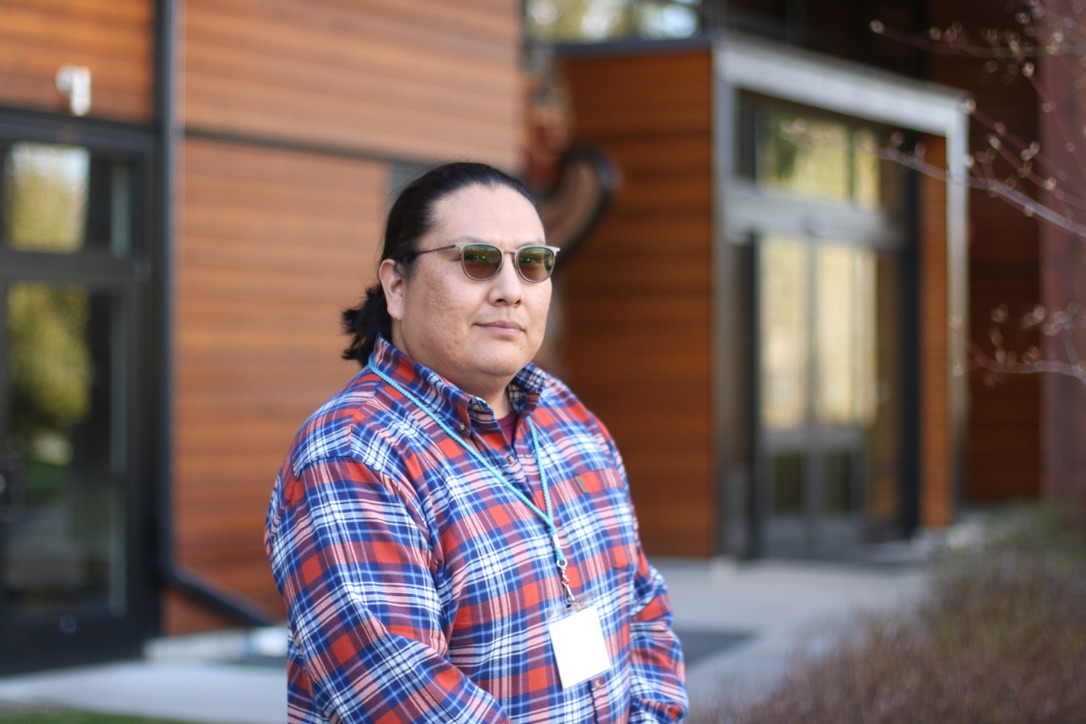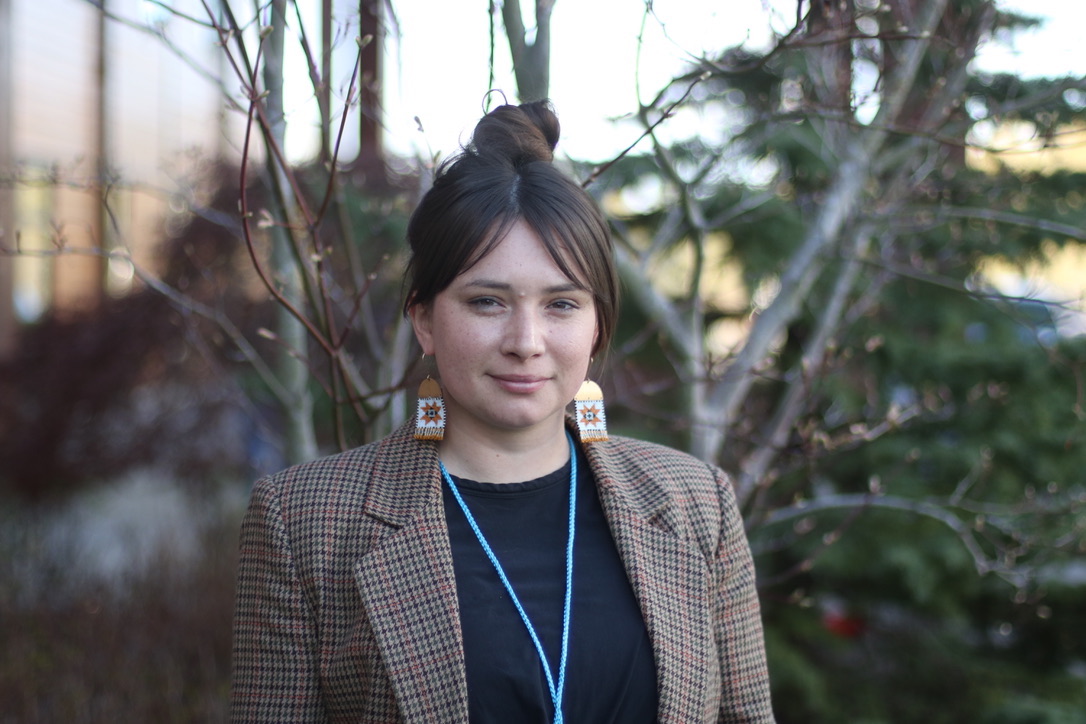
- Details
- By Jenna Kunze
TULAILIP, Wash.—The Native American Boarding School Healing Coalition (NABS) plans to launch a website this summer that will allow Native Americans to search for information on relatives who attended Indian boarding schools.
The digital archive repository and research tool will launch with nearly 50,000 records from a federal archive and, over time, integrate records from other Indian boarding school databases developed by private, nonprofit and governmental organizations.
“I hope that we find relatives that you're searching for,” NABS CEO Deb Parker, a citizen of the Tulalip Tribes in Washington, said last week. “Even if they’re on the other side, I know that they want to be found.”
Parker was speaking to about a group of two dozen American Indians, Alaska Natives and a few journalists who gathered at the Tulalip Indian Reservation’s administrative building on April 24 to learn how to use the research tool.
NABS staff invited the participants, including Native News Online, to a sharing-and-listening session on the heels of the Department of the Interior’s sixth stop on its Road to Healing tour at Tulalip the day prior. The Road to Healing is a year-long tour across the United States to provide Native survivors of the federal Indian boarding school system and their descendants an opportunity to share their experiences.
Last year, the federal government released an investigative report that showed for the first time the United States operated or supported at least 408 boarding schools that “directly targeted American Indian, Alaska Native, and Native Hawaiian children in the pursuit of a policy of cultural assimilation that coincided with Indian territorial dispossession.” The report called the institutions “both traumatic and violent” and identified at least 53 burial sites on or near former schools’ properties, with more gravesite discoveries expected as research continues.
Although the names of the institutions themselves are known or becoming known, the identities of the estimated tens of thousands of Native children who went through the Indian boarding school system—many of whom died at schools far from home and were never returned to their families—are not.
Student and school records are held in repositories across the country, which are oftentimes far removed from Native communities and available only for in-person viewing, or altogether closed to the public.
That is why NABS, a national nonprofit dedicated to truth and healing around Indian boarding schools, created The National Indian Boarding School Digital Archive—NIBSDA for short—that will launch sometime this summer.
To begin, NABS has digitized a collection of 47,000 pages of federal, tribal, and state records from the The National Archives in Seattle, a regional federal record facility of the U.S. National Archives and Records Administration. The idea is to partner with organizations doing similar work in other regions, such as The Carlisle Indian Digital Resource Center in Pennsylvania, and the Geona Indian School Digital Reconciliation Project, to eventually cover the country, and become the “authoritative center” for Indian boarding school records, according to the digital archivist who designed the database.
“We see it as a way to reveal the truth about Indian boarding schools and the lasting legacies that these schools have affected,” said NABS director of digital archives, Stephen Curley (Diné). Curley, NABS’ digital archivist assistant Fallon Carey (Cherokee), and a small staff has been working to find, catalog, and scan relevant records from federal boarding schools in Oregon, Washington, and Alaska since 2019.
 NABS’ digital archivist assistant Fallon Carey (Cherokee) (Photo: Jenna Kunze)
NABS’ digital archivist assistant Fallon Carey (Cherokee) (Photo: Jenna Kunze)
Curley said that they prioritized records including: student case files, school administrative materials including lesson plans and curriculum, and documentation of problems, such as registers of run-away students, or student deaths.
“We're trying our best to account for each and every student,” Curley said. “Really, [the tool] is for communities who want to understand more about what their relatives experienced at these institutions, and to try to find them.”
Beyond scanning historical documents, the NIBSDA project is about community engagement, and teaching people how to conduct boarding school research.
“We’re trying to create this information literacy around how to conduct boarding school records research, because it is a new thing,” Curley said. “We know that this is going to be a new feature of research and these listening sessions are an opportunity to glean what (each) community’s needs are so that we can address those needs.”
The database’s pathfinder tool prompts users with guided research questions to help them better locate their relatives, including “What is my relative’s name, and did they have any aliases or traditional names?” and “Do I know the name of the boarding school? What about the name of the agency?”
The work—which NABS is funding through various grants—will be ongoing for “years and years and years,” Curley said.
That’s because, in part, the majority of school records have not yet been located, let alone cataloged, according to NABS’ data.
Additionally, 28% of the total records are held at church-run archives, according to NABS.
NABS has been at the forefront of advocacy around a federal bill that would establish a Congressional Commission on Truth and Healing. The commission would search for unmarked graves, document ongoing impacts stemming from the Indian boarding school era, and—critically— it would empower the commission to subpoena records from religious organizations who operated boarding schools.
“That’s half the bill: how do we get access to the records?” said Theresa Sheldon (Tulailp Tribes), director of policy and advocacy for NABS.
Overall, Curley said, boarding school records have the power to reveal a lot of unknowns around boarding school, like how many children went? What were their names and tribal affiliations, what was their experience like and, in some cases, where are they buried today?
“NIBSDA will allow us to better understand the trauma that this lasting boarding school legacy has left in its wake,” Curley told Native News Online. “We know and we believe that knowing the truth will allow us to start healing, as individuals and as communities.”
More Stories Like This
50 Years of Self-Determination: How a Landmark Act Empowered Tribal Sovereignty and Transformed Federal-Tribal RelationsNCAI Resolution Condemns “Alligator Alcatraz”
NABS Documents 134 More Survivor Stories, Expands Digital Archive in 2025
Navajo Nation Considers Ending Statute of Limitations for Child Sex Offenses
Pokagon Band allowed into Michigan Adult-use Cannabis Market Through State Agreement
Help us defend tribal sovereignty.
At Native News Online, our mission is rooted in telling the stories that strengthen sovereignty and uplift Indigenous voices — not just at year’s end, but every single day.
Because of your generosity last year, we were able to keep our reporters on the ground in tribal communities, at national gatherings and in the halls of Congress — covering the issues that matter most to Indian Country: sovereignty, culture, education, health and economic opportunity.
That support sustained us through a tough year in 2025. Now, as we look to the year ahead, we need your help right now to ensure warrior journalism remains strong — reporting that defends tribal sovereignty, amplifies Native truth, and holds power accountable.
 The stakes couldn't be higher. Your support keeps Native voices heard, Native stories told and Native sovereignty defended.
The stakes couldn't be higher. Your support keeps Native voices heard, Native stories told and Native sovereignty defended.
Stand with Warrior Journalism today.
Levi Rickert (Potawatomi), Editor & Publisher

